An ancient cereal grain that originated in Europe, spelt is growing in popularity. Versatile in its delicate gluten profile, it’s an excellent substitute for all-purpose flour while offering better flavor and nutritional value fit for sweet or savory recipes.
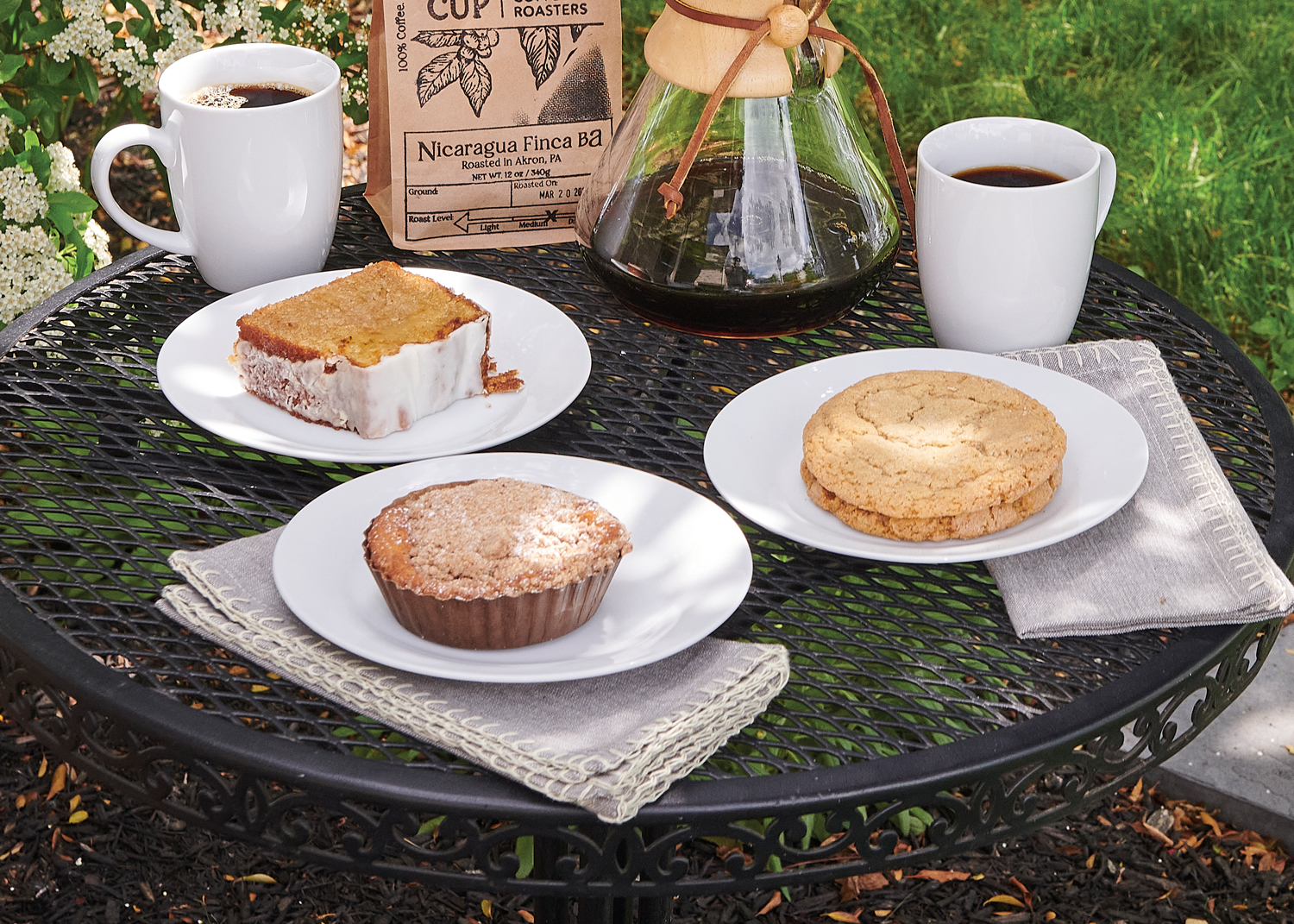
From Front Porch Baking Co. in Millersville, using spelt flour from Small Valley Milling (clockwise): Citrus olive oil cake is rich, dense and topped with a crunchy iced crust. Citrus sugar cookies are chewy with a slight suggestion of tanginess. Streusel coffee cake is full of contradictions. The sweet-and-salty confection is flaky on the outside, while the soft inside is loaded with cinnamon swirls.
This summer, you can find Front Porch products at the Lititz Farmers Market (Thursdays, 4-8 p.m.). Akron-based Whistlin’ Cup Coffee Roasters’ Nicaragua Finca BA is sold at Reiff’s Farm Market & Greenhouse in Ephrata. They also offer a drive-thru coffee trailer at 704 Main Street in Akron that operates Monday-Saturday.
Falling captive to the spelt coffee cake baked by Kristen Richards, the owner of Front Porch Baking Co. in Millersville, I was curious to know where she sources locally grown and milled spelt for baking purposes. So, heeding her advice, last summer I headed northwest from Lancaster and ended up at Small Valley Milling.
The Steigman Family
An hour-long drive took me just north of Harrisburg to Halifax in Dauphin County, where the rolling countryside opens to fields painted in golden yellow and lush green. The landscape reminded me a great deal of the area where I grew up; known as Greenbank, it’s just south of New Holland at the foot of the Welsh Mountains.
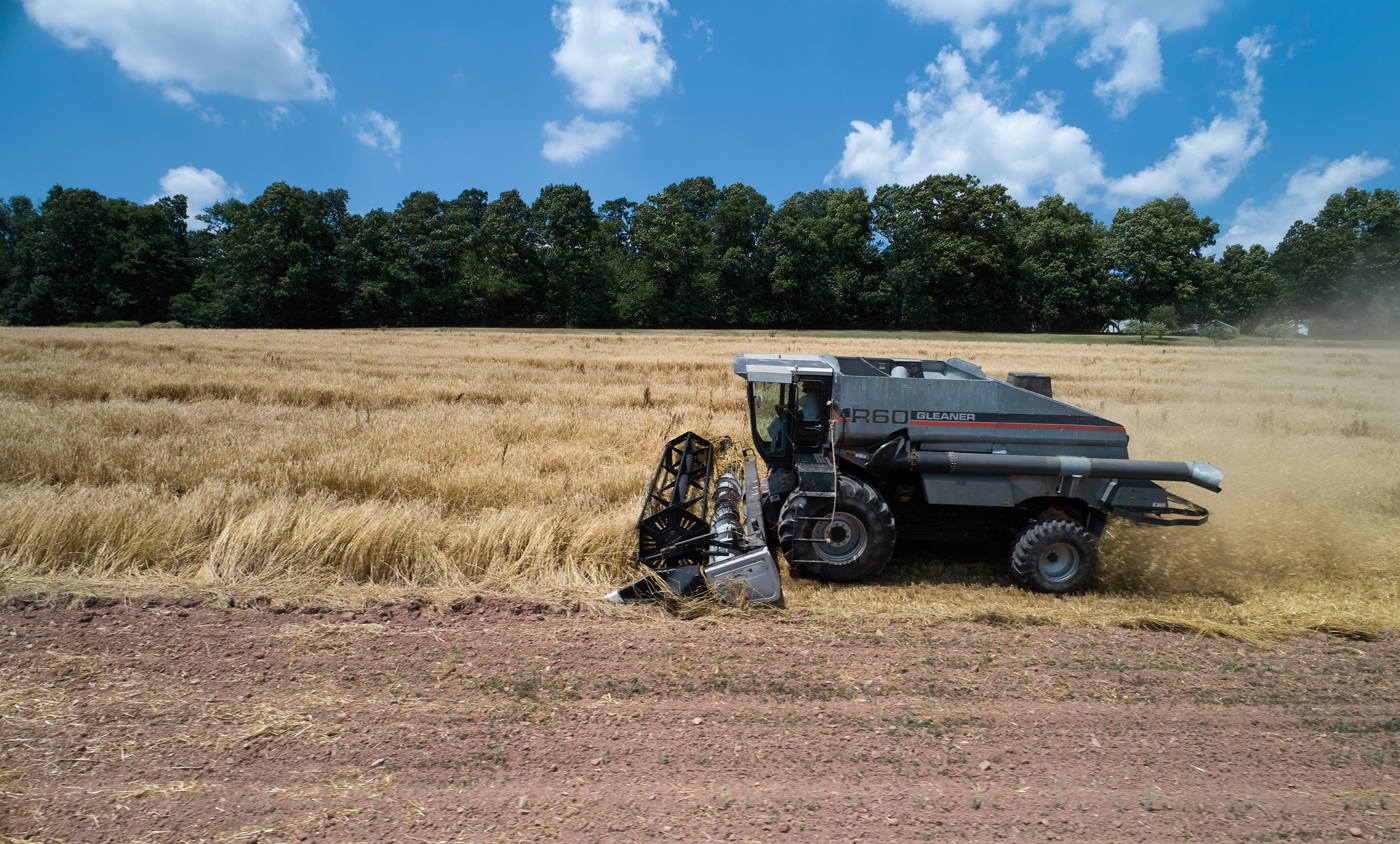
Cumulus clouds cast mid-day shadows on the farmland as Eric Steigman harvests spelt with a Deutz – Allis R60 Gleaner. Harvested spelt moves through the system with a massive auger into the hopper for temporary storage. It will later be transferred into a grain trailer to return to the mill.
It was the precipice of a busy July afternoon at Small Valley Milling when I met the father-and-son owners/operators, Joel and Eric Steigman. The surrounding fields were loaded with spelt grain that was ready to harvest. The weather was dry, bone dry, a necessity for harvesting the white seeds and golden straw that define spelt. Afternoons offer time for the sun to burn off the morning dew.
A tractor-trailer pulled away from the mill, having delivered spelt for milling. Eric points out the three generations of farmers seated in the cab: a grandfather, son and grandson. Eric’s parents, Joel and Elaine Steigman, started farming on the initial 80 acres of the current property in 1974. Today, they operate the mill and farm, which is comprised of roughly 300 acres of owned and leased land that is dedicated to the production of 100% natural and organic spelt flour. Joel is a firm believer in organic farming, having transitioned to certified organic farming in 1997. Their grain products are PA Preferred, USDA and Pennsylvania Certified Organic, as well as Lancaster County Kosher Certified.
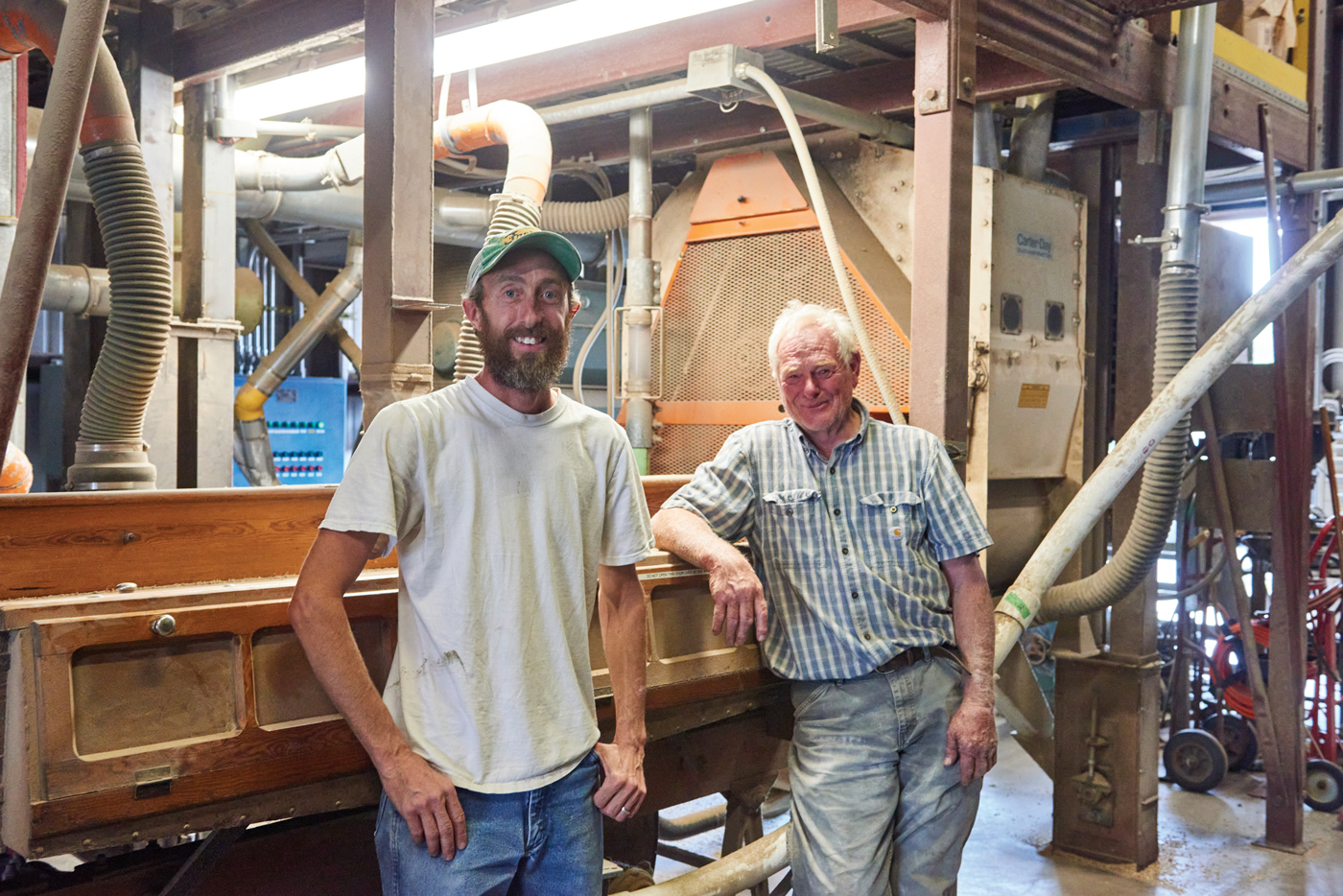
Eric and Joel Steigman at Small Valley Milling in Halifax, Dauphin County. The PA Preferred farm is USDA and Pennsylvania Certified Organic, as well as Lancaster County Kosher Certified.
“He likes to dabble in everything,” says Eric of his father. “Black barley, hull-less oats.” Spelt was one of those curiosities and Joel landed on a niche.
“We buy from growers in Lancaster County,” Eric explains, naming New Holland as a main source. “Spelt has been raised in Pennsylvania for a long time,” he notes, adding that at one time it was raised primarily as animal feed. Incredibly, for a time, Eric also lived in Greenbank, about two miles from where I grew up, along Sheep Hill Road in East Earl, having worked at what is now New Holland Agriculture.
From Ancient Grains to Modern Wheat
Spelt is an ancient grain, believed to have been cultivated since 5000 B.C. Those findings are supported by archaeological discoveries made in the geographical region near the Black Sea, known as the South Caucasus, where the Middle East meets Eastern Europe. During the Bronze and Iron ages, spelt became popular in Central Europe, particularly in Germanic regions. It was later grown in Britain, as it’s well-suited for colder climates from a growing and storage perspective.
“If you look at the chromosomes, that’s how they trace it back,” says Eric “Einkorn has the fewest number of chromosomes. It crossbred with wild grass and got emmer, which is another ancient grain. Emmer crossbred with another native wild grass and the outcome of that was spelt. After spelt, then we have modern wheat”
Einkorn is the most basic ancient grain with 14 chromosomes; hybridization added 14 chromosomes in each generation. The second generation, emmer, is a less-primitive, heat-tolerant grain that was used to bake bread in Ancient Egypt, near the Pyramids of Giza. It has 28 chromosomes. When emmer later hybridized with a wild grass to become spelt, a form of wheat, 14 more chromosomes were added for 42 total.
Eighty percent of spelt’s protein is gluten, though it is more delicate and water-soluble. It also contains more fiber than wheat, making it easier to digest. The edible components of whole grains are known as grain berries, which include bran, germ and endosperm; they contain fiber, vitamins, proteins, antioxidants and healthy fats.
“That’s how the genetics came about to get modern wheat,” Eric points out. “That’s the one that man likes to play around with to get a higher yield and more proteins. Somehow, we got to a point where people are getting allergies to modern wheat, and people are seeking out spelt, emmer and einkorn to get away from modern genetics, to get something they can digest better and have less gluten sensitivity to, so they feel better when they eat it.” Joel adds: “There are some people that can eat spelt that can’t eat wheat.”
Spelt Versus Common Wheat
Common wheat is a closely related, modern derivative of spelt, with a more robust gluten structure. One of the key reasons why wheat is so popular is that the hull is removed at the time of harvest. The inclusive process removes extra steps in milling, saving time and money for better returns. On the other hand, spelt is a less-complex grain but requires the hull to be removed mechanically after storage and before milling.
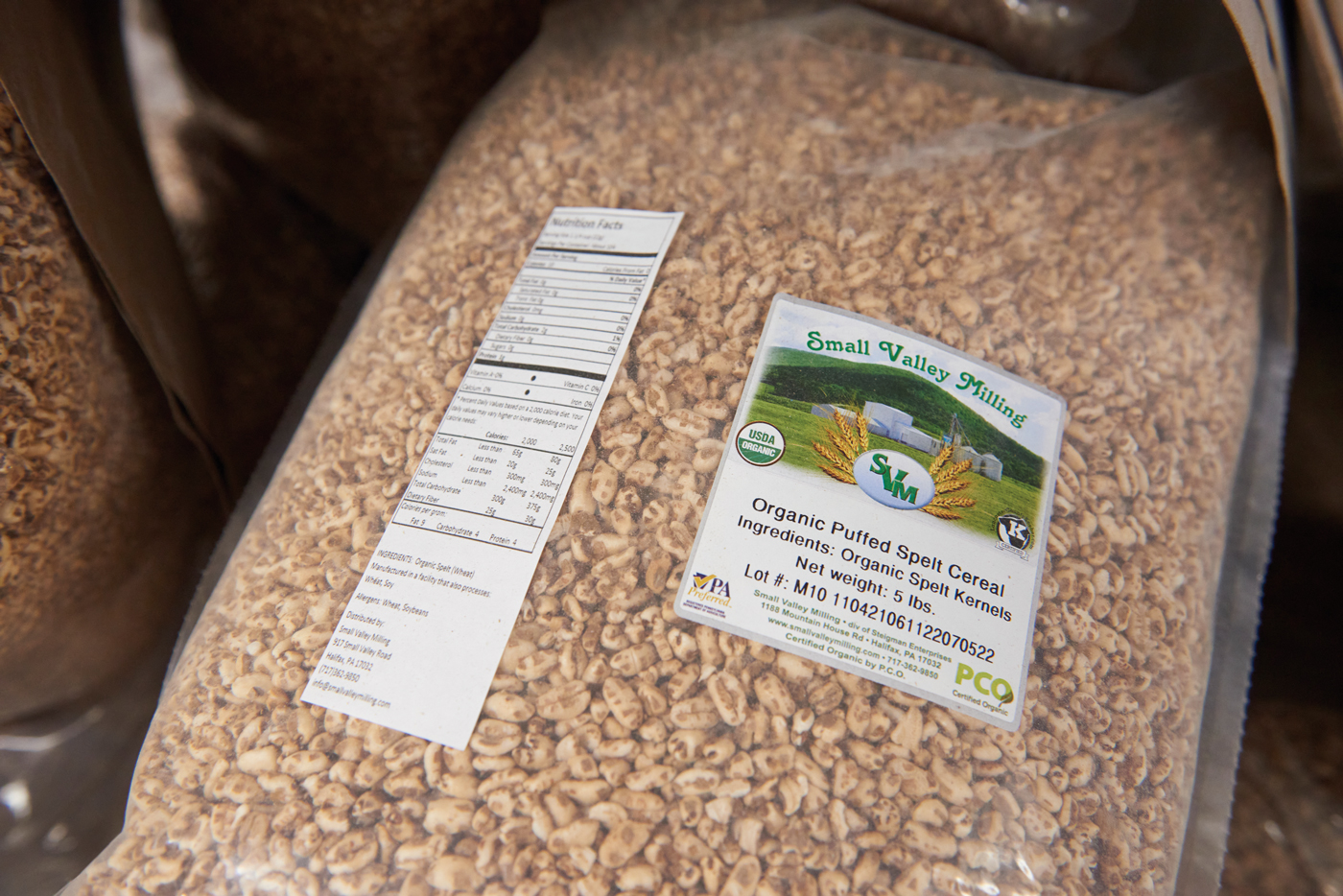
Small Valley Milling’s Puffed Spelt Cereal has a slightly sweet and nutty flavor that pairs well with brown sugar or berries.
“Unlike wheat, emmer, einkorn and spelt have a hull that’s not removed in the field,” says Eric. “Wheat is a free-threshing grain; once it’s combined it’s ready to be cleaned and milled, whereas spelt, emmer and einkorn have to go through a de-hulling process. That adds time and cost; you have losses, more time in cleaning.”
“When you harvest wheat in the field, when you bring it in and smell it, it has a good smell,” says Joel “But when it sits in these bins, it loses that fragrance. If we have spelt in the bin, it’s in the hull. When we de-hull it, it has that same freshness six months later. When we take it out of the shell, it gets ground into flour right away, so we maintain that freshness.”
For storage, spelt “has to be [dried], down to 12% moisture,” Joel continues. “We vacuum-pack our grains in plastic bags, and it’s overpacked with carbon dioxide. I can take you to a grain that’s been in the bag for three years and it smells as fresh as the day we packed it.”
The Local Grain Economy
A consequence of wheat’s efficiency is the near extinction of ancient grains. Going by the wayside during the Industrial Revolution, spelt was virtually nonexistent in the United States by the 1970s. Today, like the return to heirloom vegetables, including tomatoes, there has been a resurgence in specialty and heritage grains within local grain economies, driven by bakers (spelt, emmer and einkorn) and distillers such as Stoll & Wolfe in Lititz (Rosen rye).
Science and relationships are important to agriculture, and with spelt being a unique grain, education is important to consumers. This starts with other farmers who plant and harvest spelt in the field and bring it to Small Valley Milling for cleaning and milling.
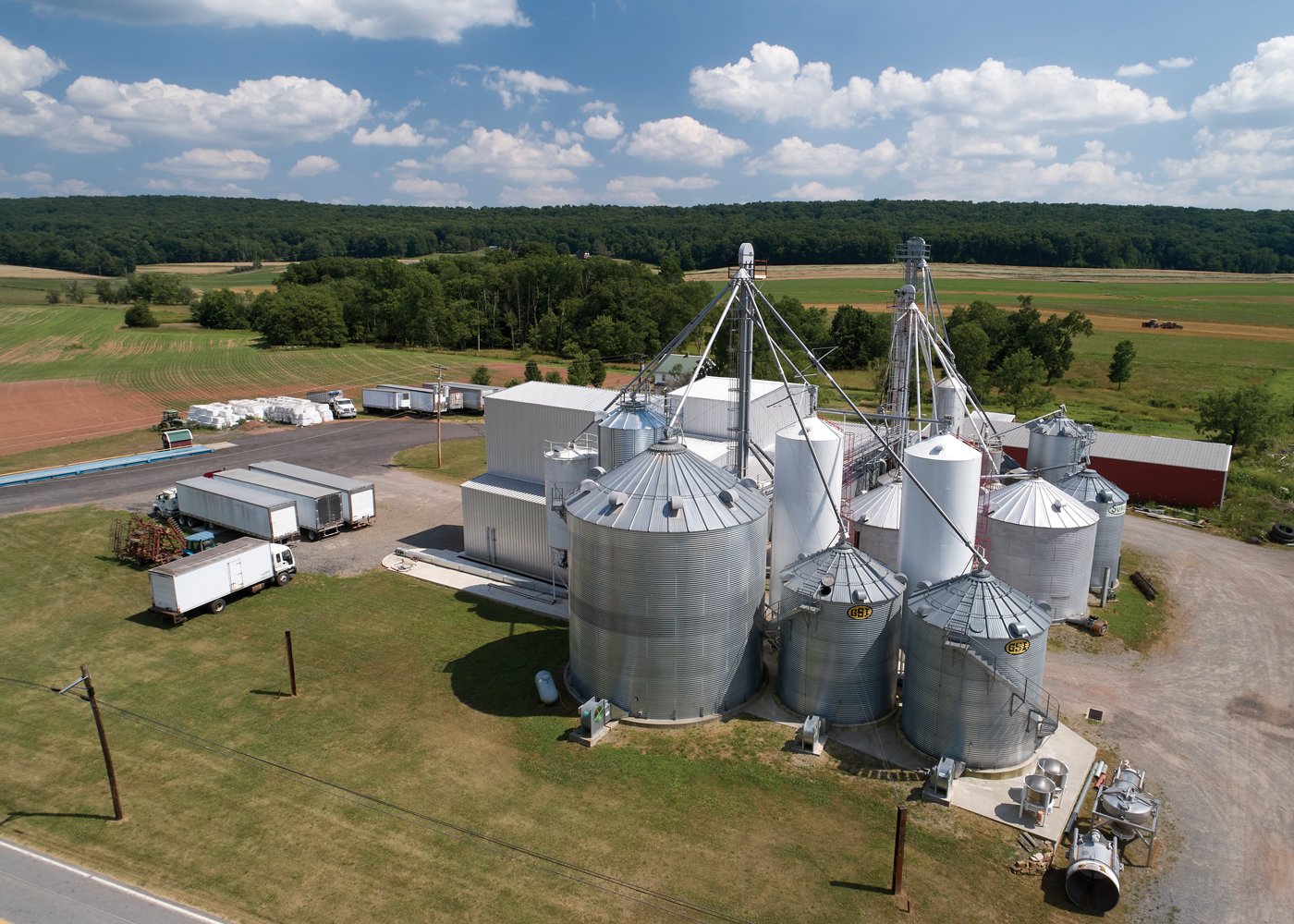
Small Valley Milling, owned and operated by the Steigman family in Halifax, Dauphin County. Working in specialty grains, spelt products are among their most notable.
Throughout the day, Eric served as a conduit of spelt information disseminated into the growing community. One farmer started his first spelt harvest and called Eric to ask how to configure the cutter head on the combine. Eric happily obliged with experienced specificity.
“They don’t know how to set their combines,” he explains. “We’re constantly an open book. We all talk. People share information if they’re having trouble.” After hanging up the phone, a text message arrived containing photographs of the first pass of cut spelt for evaluation. The combine setup was close for spelt but needed adjustments to cut the grain closer to the end of the stem.
“The more economical it looks to the person using it – the baker, the customers buying the baked goods – that cheapens up the loaf of bread and makes it more appealing,” says Eric. “You have to sell that story and the name for more money to be able to use that higher-dollar grain.”
“The more bushels per acre, the better off you are,” says Joel.
Small Valley Milling offers organic spelt products including whole flour, kernels, whole spelt pancake mix and puffed-spelt cereal. For details, visit smallvalleymilling.com.

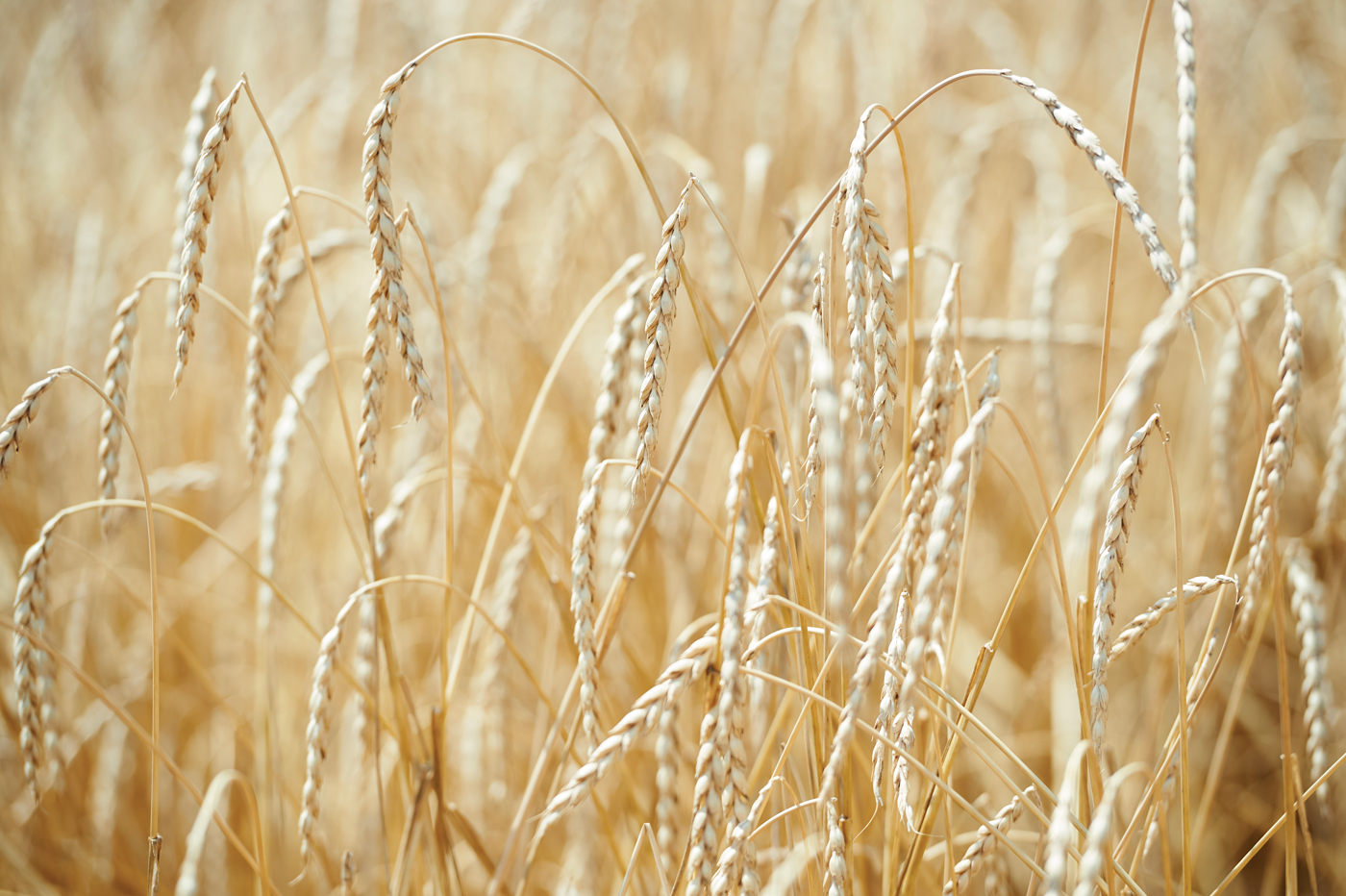
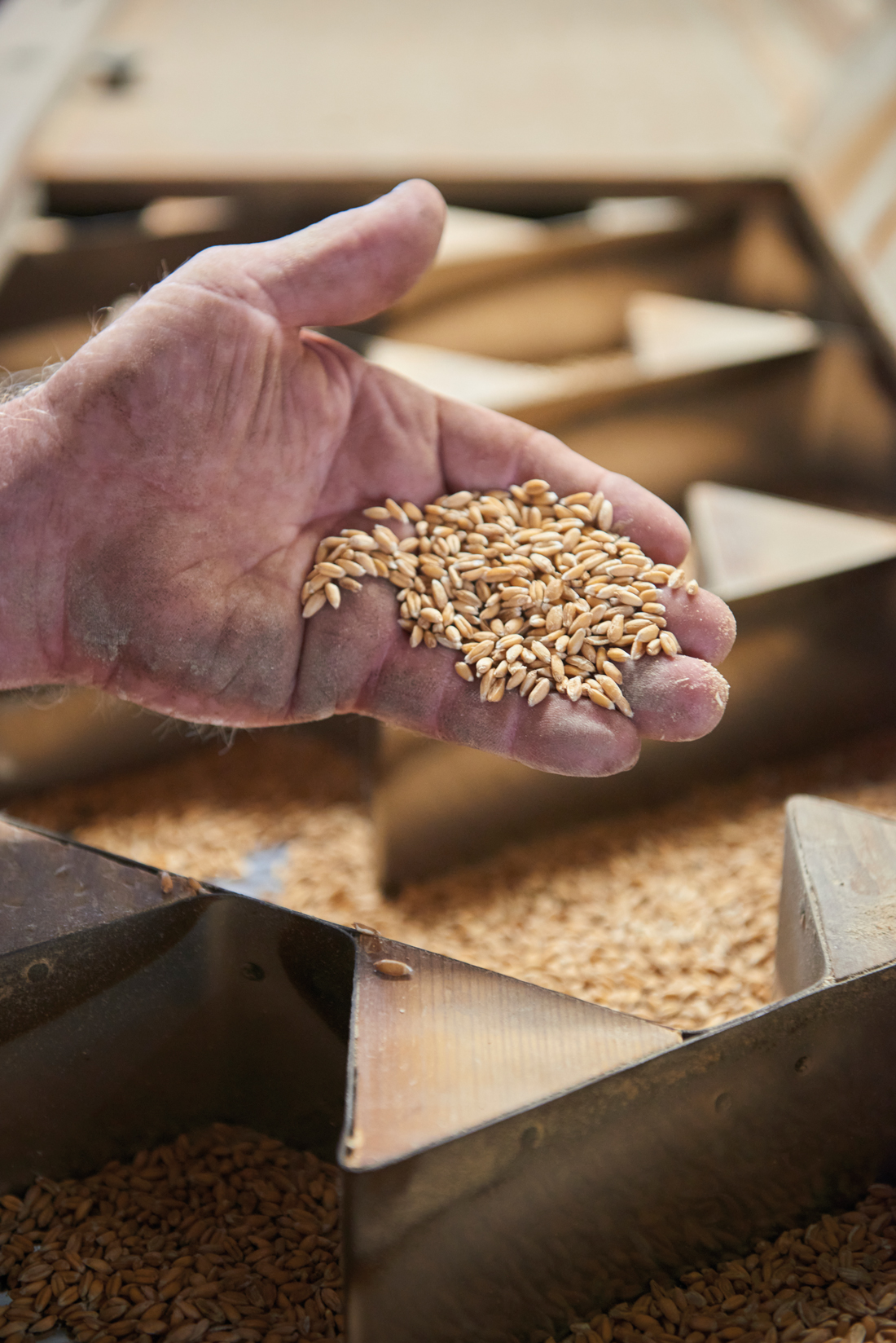
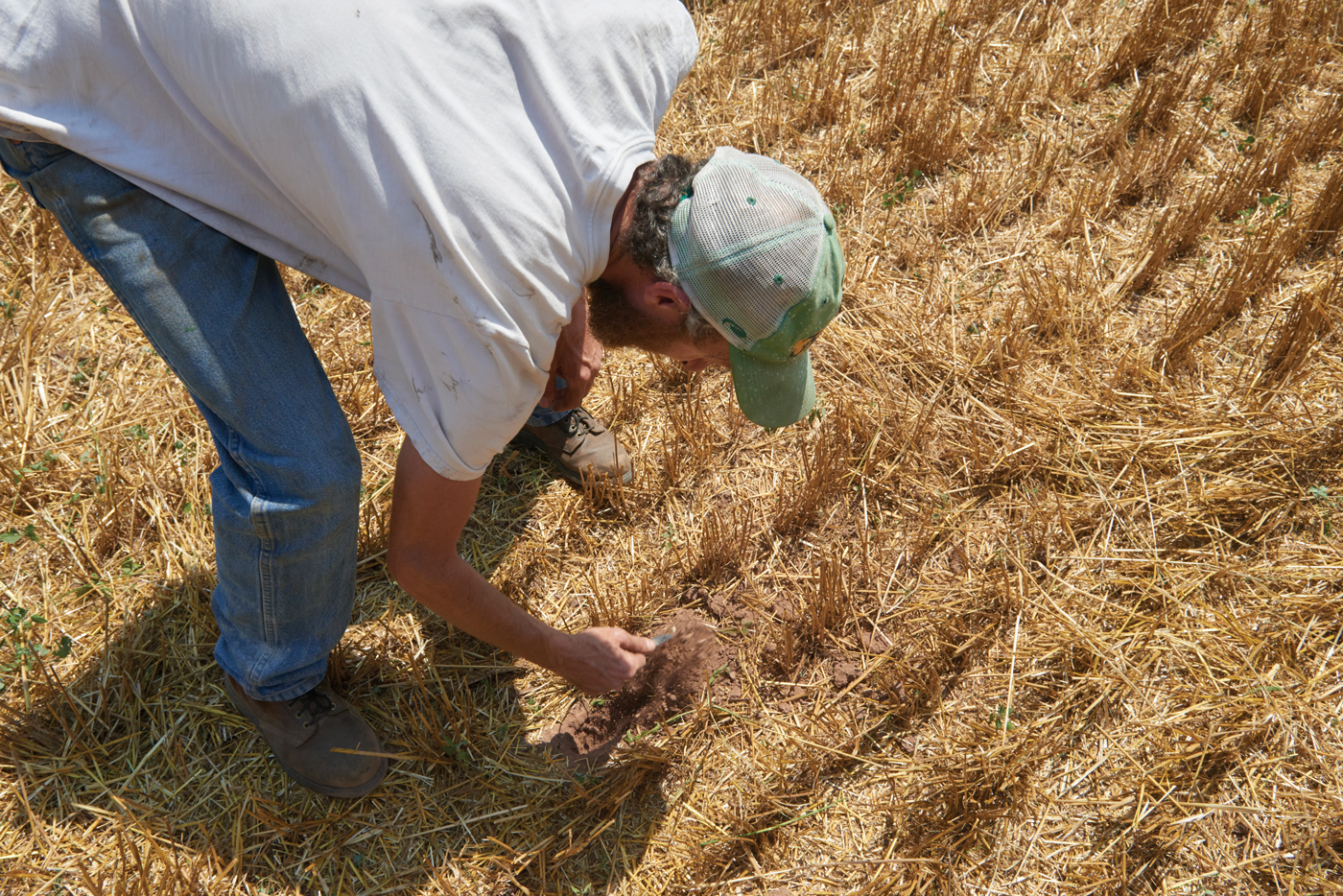
Leave a Reply